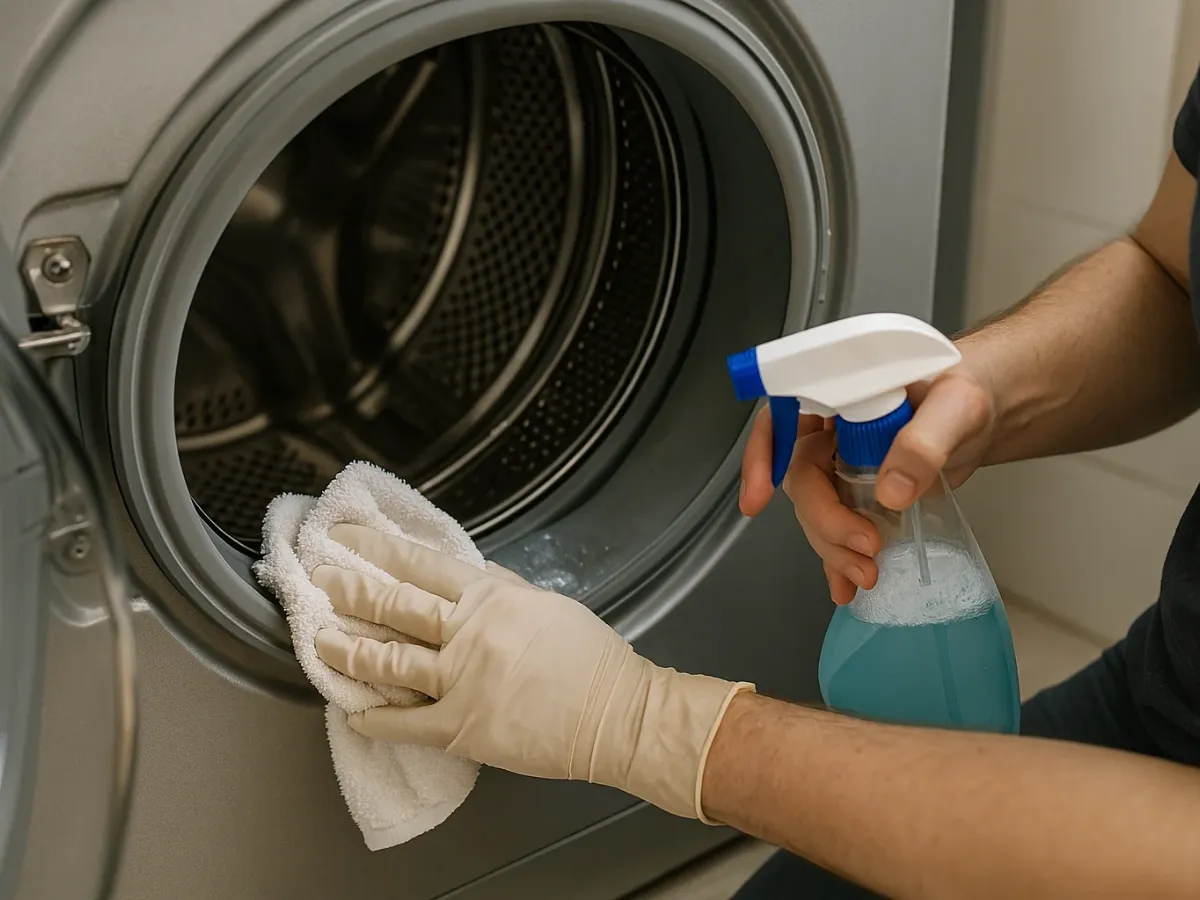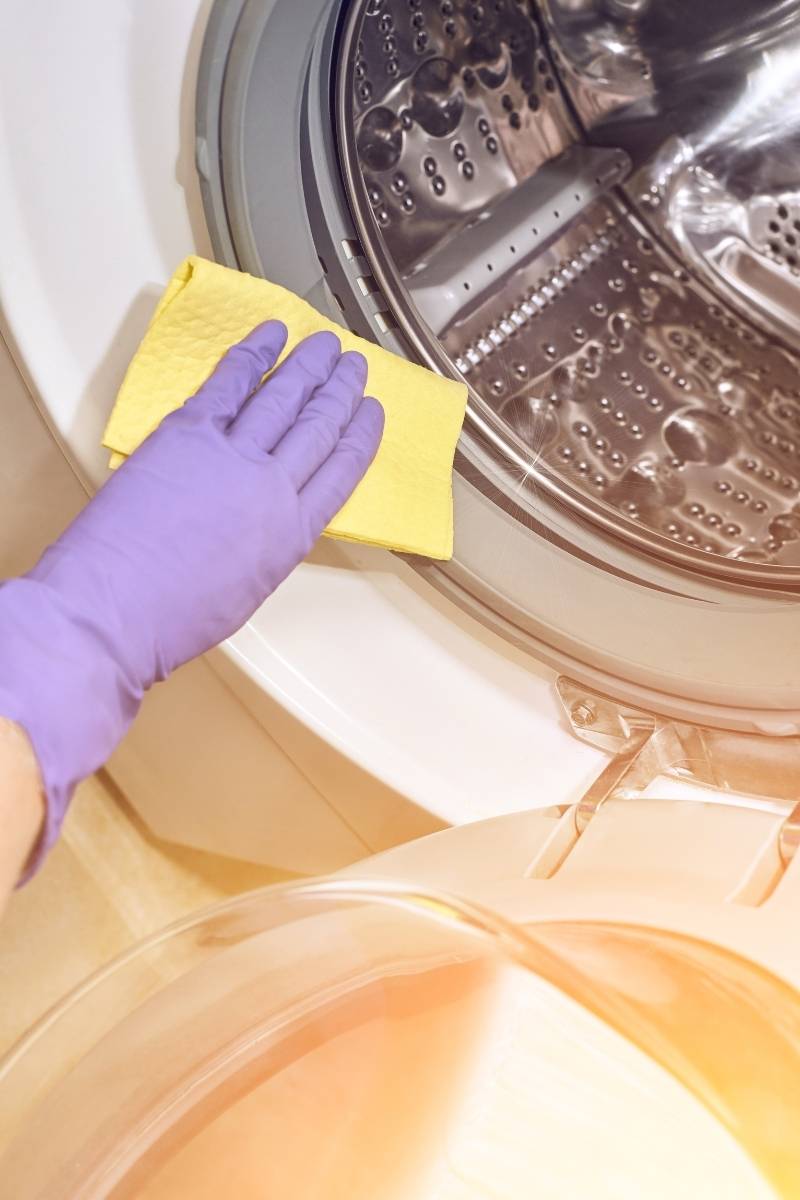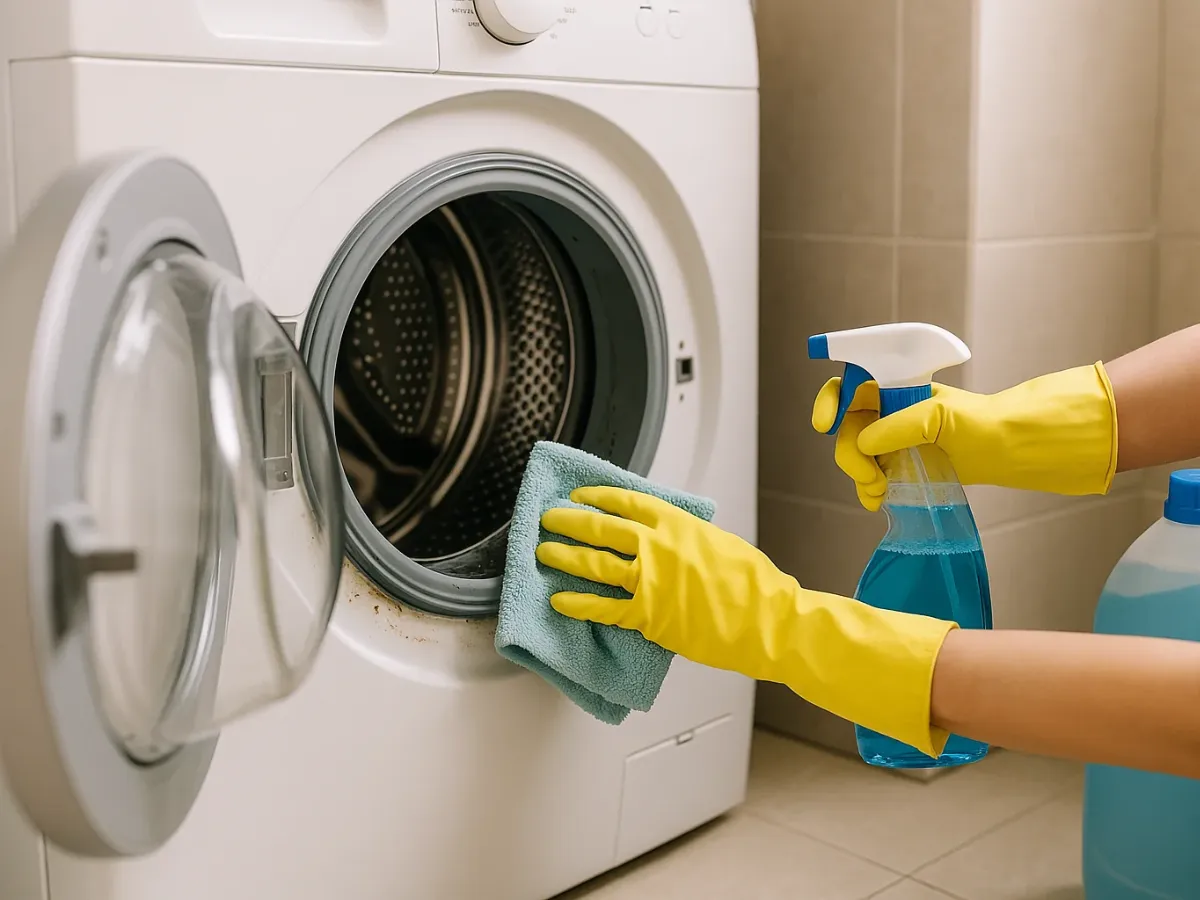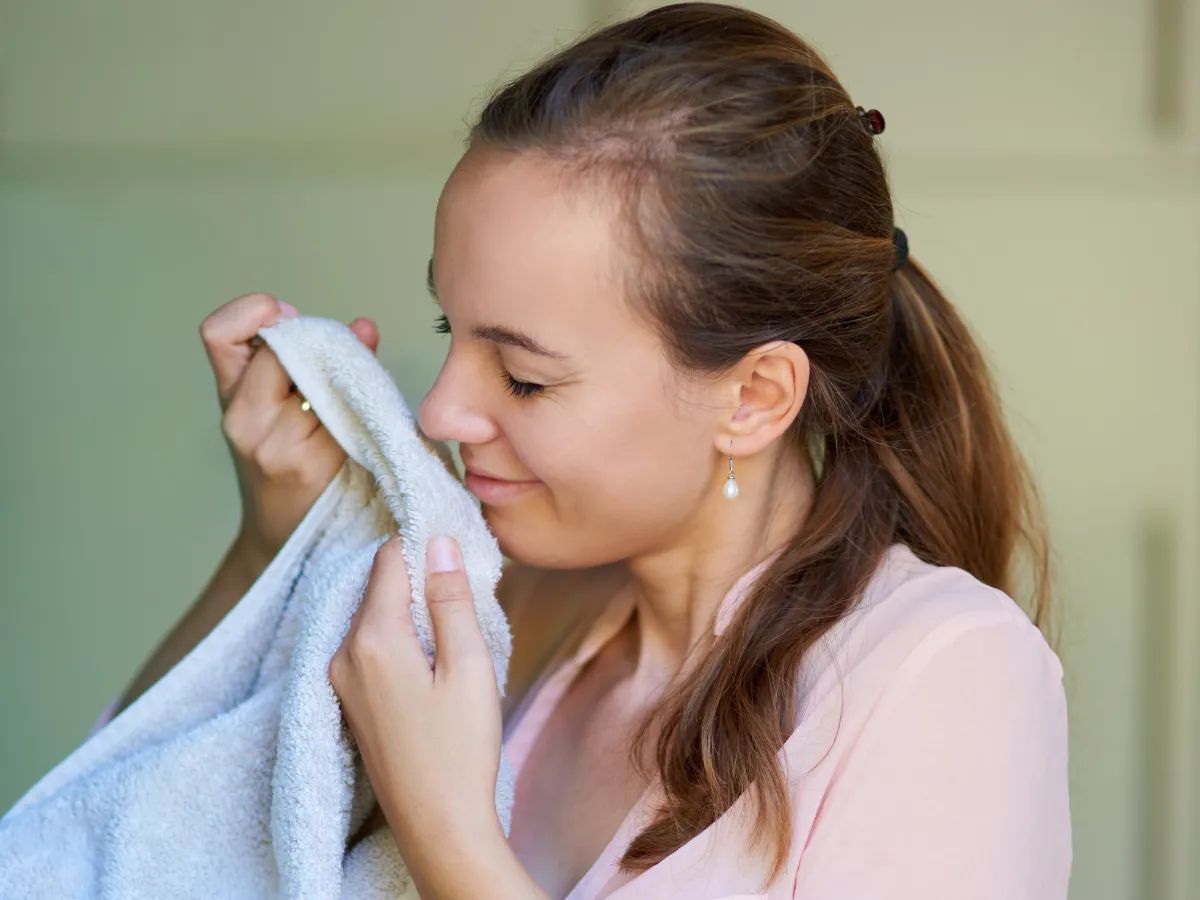Goodbye Mold and Bad Odor! Definitive Guide to Cleaning the Washing Machine Rubber Seal

The washing machine door seal (especially in front-loaders) is one of those areas often overlooked in household cleaning – until it starts to smell bad or we see those unsightly black mold spots! This rubber gasket is essential for ensuring a watertight seal during the wash, but its folded design makes it the perfect trap for moisture, detergent residue, lint, and consequently, the ideal breeding ground for mold and bacteria. Learning how to clean the washing machine rubber seal correctly is not only vital for hygiene but also for the proper functioning and longevity of your appliance.
If you've noticed an unpleasant odor when opening the washer, dark stains on the seal, or simply want to do preventive maintenance, keep reading! We'll explain step-by-step how to clean it thoroughly, remove mold, and keep it spotless.
The Washing Machine's Achilles' Heel: Why Does the Seal Get So Dirty?
The door seal, also known as a gasket or bellow, is constantly exposed to moisture and wash residues. Its inner folds are the main problem:
- Traps Moisture: After each wash, residual water gets trapped in the seal's crevices.
- Accumulates Residue: Remnants of undissolved detergent, fabric softener, lint, hair, and even small objects forgotten in pockets can get lodged in the folds.
- Ideal Environment for Mold and Bacteria: The combination of constant moisture, darkness, moderate temperature, and organic debris (dirt, soap) creates the perfect paradise for mold (those black or greenish spots) and odor-causing bacteria to grow.
This dirt and mold not only generate bad odor in the machine but can also transfer to your clothes in subsequent washes, leaving stains or an unpleasant musty smell even on freshly laundered items. Furthermore, mold can deteriorate the rubber over time, and its spores are unhealthy. That's why regular cleaning is fundamental.
Materials Needed for Effective Cleaning
You don't need very complicated products. Have these on hand:
- Rubber Gloves: Essential! They'll protect your hands, especially if using bleach.
- Clean Cloths: Microfiber or cotton. You'll need several: one to apply cleaner, one to rinse, and one to dry.
- Old Toothbrush or Small Soft Brush: To reach corners and scrub gently.
- Cotton Swabs (Optional): Useful for very small crevices.
- Cleaning Product (Choose one):
- Warm water and neutral soap (for maintenance).
- White cleaning vinegar + Water.
- Baking soda + Water.
- VERY diluted bleach (sodium hypochlorite) (ONLY for persistent black mold).
- Hydrogen peroxide (3%).
- Commercial anti-mold cleaner (follow instructions).
Key Safety Warning!: NEVER mix bleach with vinegar or ammonia. The combination generates highly dangerous toxic gases.

Deep Cleaning the Seal: Step-by-Step
Perform this thorough cleaning at least once a month, or sooner if you detect dirt or bad odor.
- Prepare Area and Safety: Make sure the washing machine is off and unplugged. Put on the rubber gloves.
- Inspect and Preliminary Wipe: Open the washer door. Wipe the entire visible surface of the seal with a dry or slightly damp cloth to remove loose hair, lint, and debris.
- Into the Folds!: Carefully pull back the folds of the rubber seal. This is where the problem hides. Gently pull it towards you to see and access the inside of the bellow properly.
- Apply Chosen Cleaner:
- Vinegar Option: Prepare a 1:1 mixture of white vinegar and warm water. Dampen a clean cloth in the mixture, wring it out well. Thoroughly clean the entire seal, focusing on the inside of the folds. For light dirt or mold, you can let the damp cloth sit inside the fold for a few minutes.
- Baking Soda Option: Make a thick paste with baking soda and a little water. Apply it with an old toothbrush or cloth onto the dirty or moldy areas. Gently scrub with the brush, especially on stains. Let the paste sit for about 15-20 minutes.
- Diluted Bleach Option (ONLY Persistent Black Mold): With good ventilation and gloves. Mix 1 part bleach per 10-15 parts COLD water. Moisten ONLY the tip of a cloth or cotton swab with the solution. Carefully apply ONLY onto the black mold stains, avoiding other parts. Let sit for a MAXIMUM of 5-10 minutes. Gently scrub with a brush if necessary.
- Hydrogen Peroxide Option: Similar to diluted bleach, but slightly less aggressive. Apply 3% hydrogen peroxide with a cloth or swab onto the mold. Let sit for a few minutes.
- THOROUGH Rinse: This step is crucial, especially if you used bleach or baking soda. Moisten a clean cloth ONLY with clean water and wipe the ENTIRE seal repeatedly, inside and out of the folds, to remove ANY residue of the cleaning product. Rinse the cloth frequently with clean water during this process.
- METICULOUS Drying: Use a clean, dry cloth (or several) to thoroughly dry the entire seal. Pay special attention to the inside of the folds; no moisture should remain.
- Final Ventilation: Leave the washing machine door open for several hours (or ideally, whenever not in use) so it finishes drying completely and air circulates.
If the mold was heavily ingrained, you might need to repeat the cleaning process (especially with diluted bleach or hydrogen peroxide) a second time after a few days.
A clean seal is an essential part of general washing machine maintenance.
Prevention: Keep the Seal Clean Longer
Cleaning is important, but prevention avoids having to fight stubborn mold:
- Dry the Seal After Each Wash: Quickly wipe the seal and the inside of the door with a dry cloth when you finish your laundry. It only takes seconds!
- Leave the Door Open!: The most important tip. Allow the inside of the washer and the seal to air out and dry completely between washes, making it much harder for mold and bad odors to develop.
- Clean the Drawer Regularly: Prevent soap residue buildup that encourages mold growth which can spread.
- Use the Correct Dose of Detergent/Softener: Excess creates more residue that feeds mold.
- Perform Deep Cleaning Monthly: Don't wait for the problem. Monthly cleaning with vinegar or baking soda will keep the seal in good condition.
Also, if you notice your clothes coming out with residue or a strange smell, it could be a sign that the seal (or the rest of the washer) needs attention. Check how to remove humidity stains if that's your issue.
Frequently Asked Questions about Cleaning the Seal
How to remove the black stuff from the washing machine rubber seal?
It's mold. Clean with very diluted bleach (1:10) or hydrogen peroxide, applying with cloth/swab only on the stain, let sit briefly, scrub gently, and rinse VERY well. Use gloves and ventilate.
How to make the washing machine rubber seal look like new?
Deep clean with vinegar/baking soda. Treat mold if present. Rinse and dry perfectly. Regular maintenance (dry after use, door open).
What product is used to clean rubber?
Water and neutral soap, diluted vinegar, baking soda paste, diluted bleach (for mold, carefully), hydrogen peroxide, or commercial anti-mold cleaners.
What can be done to properly clean a very dirty washing machine rubber seal?
Combine methods: clean first with vinegar, then apply baking soda paste and scrub. If black mold is present, use diluted bleach or hydrogen peroxide cautiously. Rinse thoroughly and dry completely.
Spending a few minutes each month cleaning the washing machine seal is an investment in hygiene, good-smelling clothes, and the longevity of your appliance. Don't let mold and dirt take over this forgotten corner!
Always Hygienic Washers? Choose LaColada!
At LaColada Self-Service Laundry Ponferrada, the cleanliness and maintenance of our machines are a top priority. We perform deep cleanings and constant checks to ensure our washers are always in perfect hygienic condition, free from bad odors, mold, and residues. Wash your clothes with the peace of mind that you're using impeccable, professional equipment!
Discover the Cleanliness of LaColada!
Sebastián R.
More than 10 years at the helm of Lacolada Lavanderia Autoserivico Ponferrada and repairing industrial and domestic machinery in my spare time. You won't find unverified theories from the internet here, just real solutions tested by someone who gets their hands dirty every day.
More on Maintenance and Cleaning

How to Clean Inside Washing Machines (Drum, Filter...)
Complete guide to removing dirt, limescale, and bad odors.

Removing Mold from Clothes Effectively and Safely
Eliminate mold stains and spores from your garments.

How to Remove Bad Smell from Towels (Even Washed Ones)
Tricks to eliminate musty odor and keep them fresh.